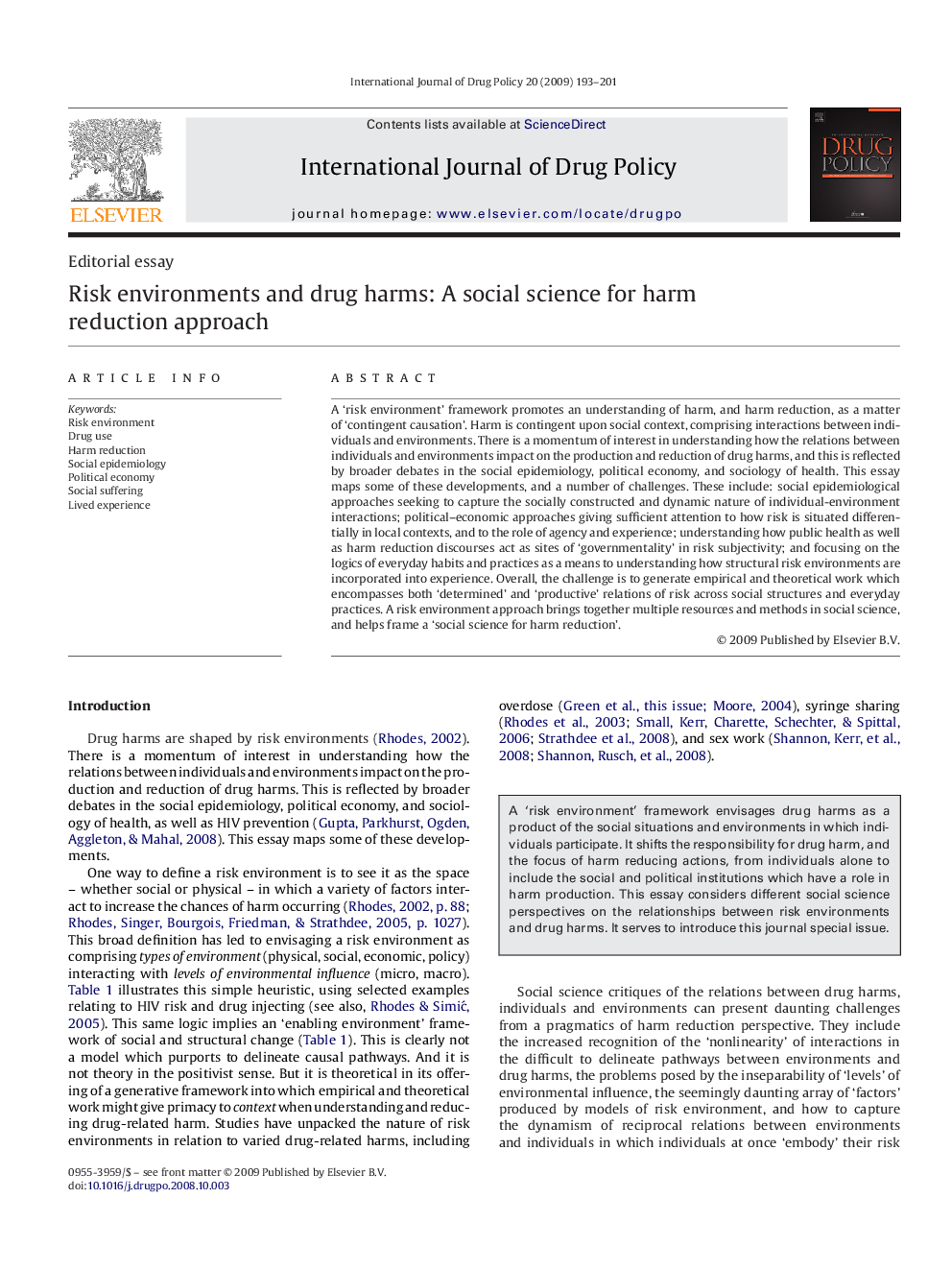| Article ID | Journal | Published Year | Pages | File Type |
|---|---|---|---|---|
| 1075562 | International Journal of Drug Policy | 2009 | 9 Pages |
A ‘risk environment’ framework promotes an understanding of harm, and harm reduction, as a matter of ‘contingent causation’. Harm is contingent upon social context, comprising interactions between individuals and environments. There is a momentum of interest in understanding how the relations between individuals and environments impact on the production and reduction of drug harms, and this is reflected by broader debates in the social epidemiology, political economy, and sociology of health. This essay maps some of these developments, and a number of challenges. These include: social epidemiological approaches seeking to capture the socially constructed and dynamic nature of individual-environment interactions; political–economic approaches giving sufficient attention to how risk is situated differentially in local contexts, and to the role of agency and experience; understanding how public health as well as harm reduction discourses act as sites of ‘governmentality’ in risk subjectivity; and focusing on the logics of everyday habits and practices as a means to understanding how structural risk environments are incorporated into experience. Overall, the challenge is to generate empirical and theoretical work which encompasses both ‘determined’ and ‘productive’ relations of risk across social structures and everyday practices. A risk environment approach brings together multiple resources and methods in social science, and helps frame a ‘social science for harm reduction’.
